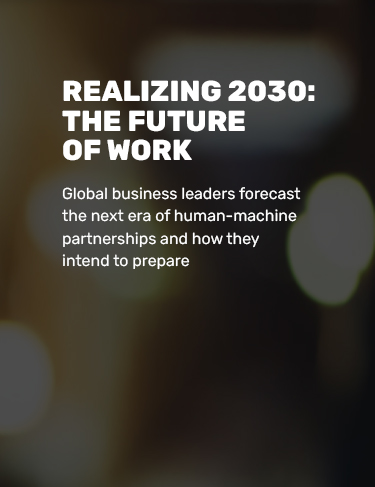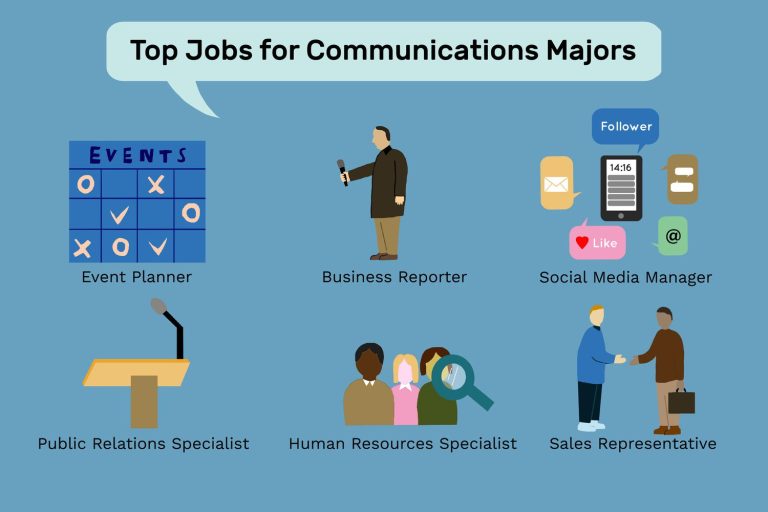How To Prepare For Human-Machine Partnerships at Work? Expert Tips
Human-machine partnerships are changing how we work. To thrive, we need to adapt.
As technology advances, the workplace evolves rapidly. Machines and humans now collaborate in ways never imagined before. This shift brings both opportunities and challenges. By preparing for these partnerships, we can improve productivity, enhance creativity, and streamline tasks. But how do we get ready?
What steps should we take to ensure a smooth transition? In this post, we will explore practical strategies to prepare for human-machine partnerships. These insights will help you navigate the future of work with confidence and ease.

Credit: valasysb2bmarketing.com
Embracing The Future Of Work
As we edge closer to a future where humans and machines work side by side, it’s essential to understand and embrace these changes. The workplace is evolving, and so must we. Preparing for human-machine partnerships isn’t just about learning new skills; it’s about adopting a new mindset. Let’s dive into how you can get ready for this exciting transformation in the workplace.
Recognizing The Shift
The first step in preparing for human-machine partnerships is recognizing that the shift is already happening. From AI-powered customer service bots to automated manufacturing processes, machines are increasingly taking on tasks once performed by humans.
Take a look at these examples:
- AI in Customer Service: Automated chatbots are handling customer queries, providing quick and efficient responses.
- Automation in Manufacturing: Robots are assembling products with precision and speed.
- Data Analysis: Machines are processing vast amounts of data to uncover trends and insights that humans might miss.
Understanding these changes helps in accepting that machines are here to stay and can work alongside us, not against us.
Adapting To New Roles
With machines taking over routine tasks, our roles in the workplace are also evolving. This shift means we need to focus more on tasks that require human touch – creativity, critical thinking, and emotional intelligence.
Here’s how you can adapt:
- Upskill Yourself: Learn new skills that complement machine capabilities. Take courses in data analysis, digital marketing, or even coding.
- Focus on Soft Skills: Develop skills like communication, leadership, and problem-solving. These are areas where humans excel and machines struggle.
- Be Open to Change: Embrace new technologies and be willing to experiment. Change can be intimidating, but it also brings new opportunities.
Remember, the goal isn’t to compete with machines but to collaborate with them. By adapting to new roles, we can leverage the strengths of both humans and machines, creating a more efficient and innovative workplace.
Embracing the future of work means preparing yourself for a dynamic and ever-changing environment. Recognize the shift and adapt to new roles, and you’ll be well on your way to thriving in a human-machine partnership.

Credit: www.forbes.com
Skill Development Strategies
As technology continues to evolve at an unprecedented pace, the workplace is seeing a significant shift towards human-machine partnerships. To thrive in this new era, it’s crucial to develop the right set of skills. This isn’t just about mastering complex algorithms or coding languages; it’s also about nurturing the softer, more human side of our skillset. Let’s dive into the essential skill development strategies for working harmoniously with machines.
Technical Skills
When we talk about technical skills, we’re referring to the abilities required to interact with and optimize technology. Think of it as the toolkit you’ll need to work effectively with machines.
- Understanding AI and Machine Learning: You don’t need to become a data scientist, but having a basic understanding of AI and machine learning can help you understand how these technologies can assist you.
- Data Literacy: In a world driven by data, being able to read, interpret, and draw insights from data is invaluable. Consider taking online courses or workshops to boost your data skills.
- Programming Skills: Basic knowledge of programming languages such as Python or JavaScript can give you an edge. Even if you’re not a developer, understanding the fundamentals can be very beneficial.
Let’s not forget the practical side of things. For example, I once took a short online course on Python and was surprised by how much it helped me automate mundane tasks. It saved me hours each week!
Soft Skills
While technical skills are critical, soft skills should not be overlooked. Machines might be able to process data faster than us, but they lack the human touch.
- Communication: Clear and effective communication is key. Whether you are explaining a technical concept to a non-technical team or collaborating on a project, your ability to convey ideas clearly is invaluable.
- Adaptability: The only constant in tech is change. Being adaptable means you can quickly learn new tools and technologies, ensuring you stay relevant.
- Problem-Solving: Machines can process information, but humans excel at creative problem-solving. Hone your ability to think critically and solve problems innovatively.
Remember, soft skills are what make us truly irreplaceable. I once worked on a project where my ability to mediate a disagreement between team members was more valuable than any technical solution I could have provided.
In conclusion, preparing for human-machine partnerships at work requires a balanced approach. Invest time in developing both your technical and soft skills, and you’ll be well-equipped to thrive in the future workplace.
Building Collaborative Environments
As we look towards the future of work, one thing is certain: human-machine partnerships will become increasingly prevalent. This shift necessitates the creation of collaborative environments where both humans and machines can thrive. But how do we build such environments? Let’s explore key strategies under the subheadings: Fostering Teamwork and Encouraging Innovation.
Fostering Teamwork
Teamwork is the cornerstone of any successful partnership, including those between humans and machines. Here are some steps to foster effective teamwork in this new paradigm:
- Communication: Clear and open communication is essential. Team members need to understand how to interact with machines and what to expect from them.
- Training: Continuous training programs should be in place to help employees stay updated with the latest technology trends and tools.
- Roles and Responsibilities: Clearly defined roles ensure that both humans and machines know what is expected of them. This avoids confusion and enhances productivity.
Imagine a team where everyone knows their role and communicates effectively. The machine processes data quickly, while the human interprets and acts on that data. Such synergy can lead to remarkable outcomes!
Encouraging Innovation
Innovation is the lifeblood of progress. When humans and machines work together, they can achieve groundbreaking results. Here’s how to cultivate a culture of innovation:
- Encourage Experimentation: Allow team members to experiment with new ideas. Failure should be seen as a learning opportunity, not a setback.
- Provide Resources: Equip your team with the necessary tools and resources to innovate. This includes access to the latest technologies and platforms.
- Recognize and Reward: Acknowledge and reward innovative ideas and successful implementations. This motivates the team to continue pushing boundaries.
Think about Thomas Edison’s famous quote, “I have not failed. I’ve just found 10,000 ways that won’t work.” Encouraging a similar mindset within your team can lead to incredible innovations. And who knows? The next big breakthrough could be just around the corner.
By focusing on Fostering Teamwork and Encouraging Innovation, we can build collaborative environments where human-machine partnerships flourish. These strategies ensure that both entities can work together harmoniously, driving success and growth for the organization.
Leveraging Technology
Leveraging technology is essential for preparing for human-machine partnerships at work. Embracing new tools and systems can improve efficiency and productivity. This section will explore how to utilize AI tools and integrate automation effectively.
Utilizing AI Tools
AI tools can help streamline various tasks in the workplace. They can handle repetitive tasks, allowing employees to focus on more complex work. AI tools can analyze data faster and more accurately than humans. This can lead to better decision-making and insights.
For example, chatbots can manage customer inquiries efficiently. They provide instant responses and reduce wait times. AI-driven analytics can help in predicting market trends. This can give businesses a competitive edge.
Integrating Automation
Automation can significantly enhance workflow efficiency. By automating repetitive tasks, teams can save time and reduce errors. This allows employees to concentrate on strategic initiatives.
Robotic Process Automation (RPA) can automate data entry and other mundane tasks. This reduces human error and speeds up processes. Automated scheduling tools can manage appointments and meetings seamlessly. This ensures better time management and organization.
Integrating automation in manufacturing can boost production rates. It ensures consistency and quality in the output. Automated systems can also monitor equipment health. This helps in predictive maintenance, preventing costly downtimes.
Continuous Learning
In the ever-evolving landscape of technology, staying ahead means embracing a mindset of continuous learning. As human-machine partnerships become more common, workers must adapt and grow their skill sets to remain relevant. But how exactly can one keep up with the rapid pace of change? Let’s delve into some strategies.
Upskilling Programs
Upskilling programs are designed to enhance your current skills or teach you new ones. These can be invaluable in ensuring you stay competitive. Many companies offer these programs in-house, focusing on the specific technologies and processes they use. For instance, if your company is integrating AI into its operations, an upskilling program might include courses on machine learning, data analysis, or even basic coding.
Consider the following benefits of upskilling programs:
- Increased Job Security: By continuously improving your skill set, you make yourself indispensable to your employer.
- Career Advancement: New skills can open doors to promotions and new job opportunities.
- Personal Growth: Learning new things can be incredibly fulfilling on a personal level.
Mentorship Opportunities
Another excellent way to stay ahead is to seek out mentorship opportunities. A mentor can provide invaluable insights into your industry’s trends and how to navigate them. They can also offer personalized advice on which skills to develop and how to apply them effectively.
Here are some tips for finding and benefiting from a mentor:
- Identify Potential Mentors: Look for experienced professionals in your field who have a track record of success.
- Reach Out: Don’t be afraid to ask someone you admire if they would be willing to mentor you. Most people are flattered by such requests and happy to help.
- Be Open to Feedback: A mentor’s advice can sometimes be tough to hear, but it’s often exactly what you need to grow.
For example, when I first started in my career, I sought out a mentor who had extensive experience in our industry. Through regular meetings and honest feedback, I was able to gain new insights and develop skills that have been crucial to my success.
In conclusion, continuous learning through upskilling programs and mentorship opportunities is essential for thriving in a world where human-machine partnerships are the norm. By investing in your growth, you’re not only securing your future but also contributing positively to your organization’s success.
Frequently Asked Questions
What Does Human-to-machine Collaboration Involve?
Human-to-machine collaboration involves humans and machines working together. It enhances efficiency, productivity, and decision-making by combining human creativity with machine precision.
What Are The Skills Of Human-ai Collaboration?
Key skills of human-AI collaboration include effective communication, critical thinking, adaptability, problem-solving, and understanding AI capabilities and limitations.
What Is An Example Of Humans And Machines Working Together?
An example is doctors using AI for diagnosing diseases. AI analyzes medical data, helping doctors make accurate decisions quickly.
Conclusion
Preparing for human-machine partnerships is essential in today’s workplace. Embrace technology. Develop new skills. Foster collaboration between humans and machines. Stay adaptable and open-minded. This approach ensures a successful transition. By doing so, you enhance productivity and job satisfaction. Focus on continuous learning.
Stay updated with technological advancements. Build a future where humans and machines work together seamlessly. Investing time and effort now will pay off. Your readiness will lead to long-term success.



